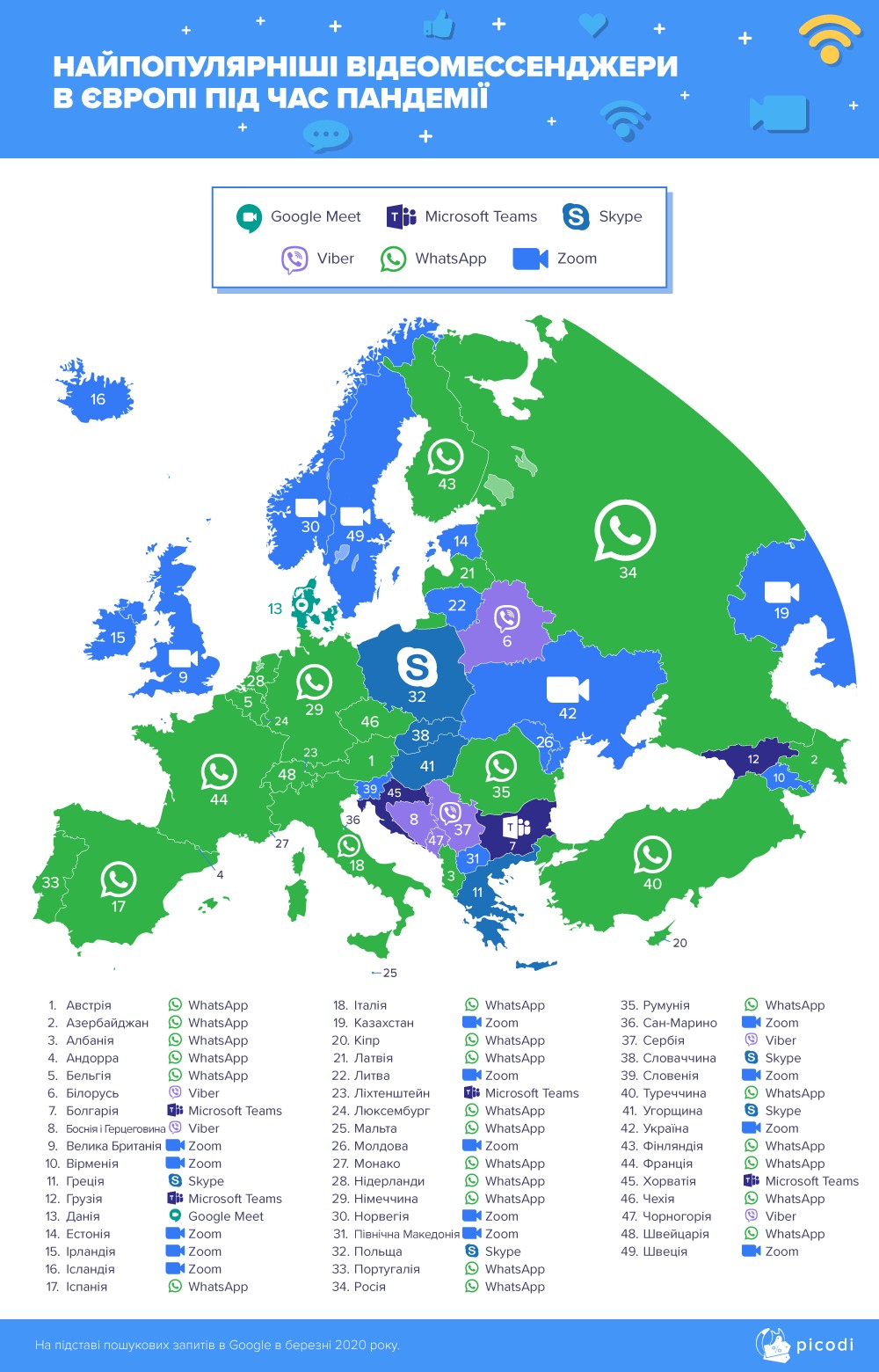Which messengers are currently the most popular in Europe
29.04.20
During the pandemic, the demand for messengers has increased many times, allowing remote work, study, meeting with friends without leaving home. In Europe, since the introduction of restrictions, interest in messengers has increased 7 times – this is stated in the research of Picodi.
WhatsApp became the undisputed European leader – it is chosen most often in 22 countries. This program occupies the first line of the rating in the territory from Portugal and Spain to Germany.
In 14 countries, the Zoom program is most often used. The program is in great demand in Ukraine, Moldova, northern Europe (Great Britain, Norway) and some Baltic countries (Lithuania, Estonia).
Skype is preferred in Poland, Slovakia, Hungary and Greece.
Viber is most popular in Belarus, Bosnia and Herzegovina, Montenegro and Serbia.
Microsoft Teams – in Bulgaria, Croatia, Georgia and Liechtenstein. And only Danish people prefer Google Meet during the pandemic.
It should be noted that the study does not identify any groups of users by profession and interests that used certain messengers. It is noted that the rating is based on a comparison of the number of requests for 19 video messengers in the Google search engine (based on archived data from the Google Keyword Planner service).
Don't miss interesting news
Subscribe to our channels and read announcements of high-tech news, tes
Oppo A6 Pro smartphone review: ambitious

Creating new mid-range smartphones is no easy task. Manufacturers have to balance performance, camera capabilities, displays, and the overall cost impact of each component. How the new Oppo A6 Pro balances these factors is discussed in our review.
Editor’s Choice 2025. Best devices of the year by hi-tech.ua

The best gaming laptops, mice for work, gaming keyboards, smartphones, and wireless headphones of 2025. Among them, we will highlight the most interesting ones and those that we can recommend buying.
YouTube will be completely blocked in russia YouTube
Russian authorities continue to restrict citizens’ access to independent sources of information. After blocking Instagram, Facebook, WhatsApp, Discord, Viber, and even the game Roblox
EU will not ban internal combustion engine cars after 2035 car law
European Union has revised its approach to regulating the sale of cars with internal combustion engines and abandoned the idea of a complete ban.



